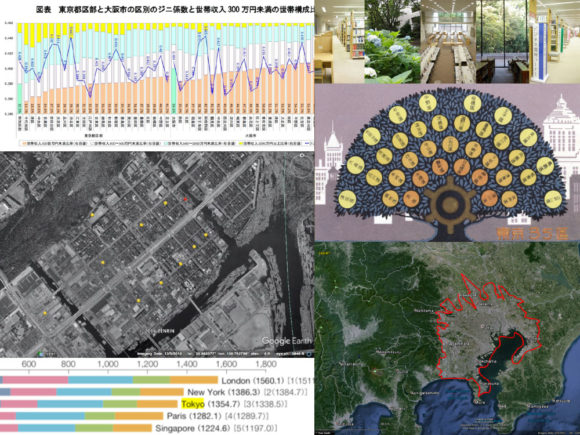Several classes at the beginning of the Metropolitan Tokyo course I teach at TUJ are dedicated to establishing a context for analyzing the Japanese capital. I comment on these lectures after the jump.

Several classes at the beginning of the Metropolitan Tokyo course I teach at TUJ are dedicated to establishing a context for analyzing the Japanese capital. I comment on these lectures after the jump.

This is the first post in a series of summaries of and notes on my lectures for “Metropolitan Tokyo”, a class that I teach at Temple University Japan. I have written more about it here.

I have been teaching at Temple University’s Japan campus for more than a year now and still haven’t written anything on this blog here to reflect on this amazing experience. This shall now change with some thoughts on the most recent course I teach called “Metropolitan Tokyo”.
TUJ’s Azabu Campus
Comparisons across cities are notoriously hard. For one, data availability is a huge problem given our methodological bias on the nation state. But there is also the problem on how we delineate municipalities. Nonetheless, I found this graph on city size and inequality very interesting.

Click here for original
I wanted to share and briefly discuss a great graph on income inequalities in Tokyo and Osaka that I found. It has been compiled by the NLI Research Institute and shows interesting variations across the 23 wards.
Click for original Continue reading
One of the first ideas to come out of writing this blog was to edit a book about Tokyo’s postwar architecture. It’s been several years since and I am wondering how I would go about a book on this or a similar topic now, almost five years later.

A few weeks ago I discussed the concept of “Tokyo as a slum” and how apt it is to describe living conditions in the postwar period. This is important if we are to glean how useful Tokyo’s experience is to today’s emerging megacities. A more fitting description, I found, may be that of “shared space poverty”. I took a good look at the 1963 Housing Survey for data to support that line of thinking.
1963 construction on the Metropolitan Expressway (photo source)
I have been wading through historical budget data for the 23 wards here in Tokyo. To many, nothing could be more dry. However, I think that understanding public finance in the first megacity holds an important key in explaining the city’s success.
Tokyo as seen from Tokyo Metropolitan Government Building
I re-read Matias’s and Rahul’s article on “When Tokyo Was A Slum” on Next City. It makes a good qualitative case as to why the city’s incremental, unplanned growth post-WWII may hold lessons for today’s developing cities. I looked for some quantitative substantiation of their claim that indeed Tokyo was a slum. Here is what I dug up.
Meguro-ku, seen from Town Hall
…goes the title of a relatively old paper by Professor David Flath, who teaches economics at Ritsumeikan University these days. As I study Tokyo’s postwar history and, as part of that, am interested in the density of retail stores, it’s worth summing up the main points and adding a few more thoughts. The high density of retail is a phenomenon that despite several years of de-densification stays roughly intact today.
Evening conbini scene, Nakano-ku